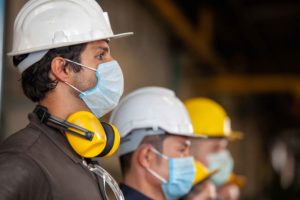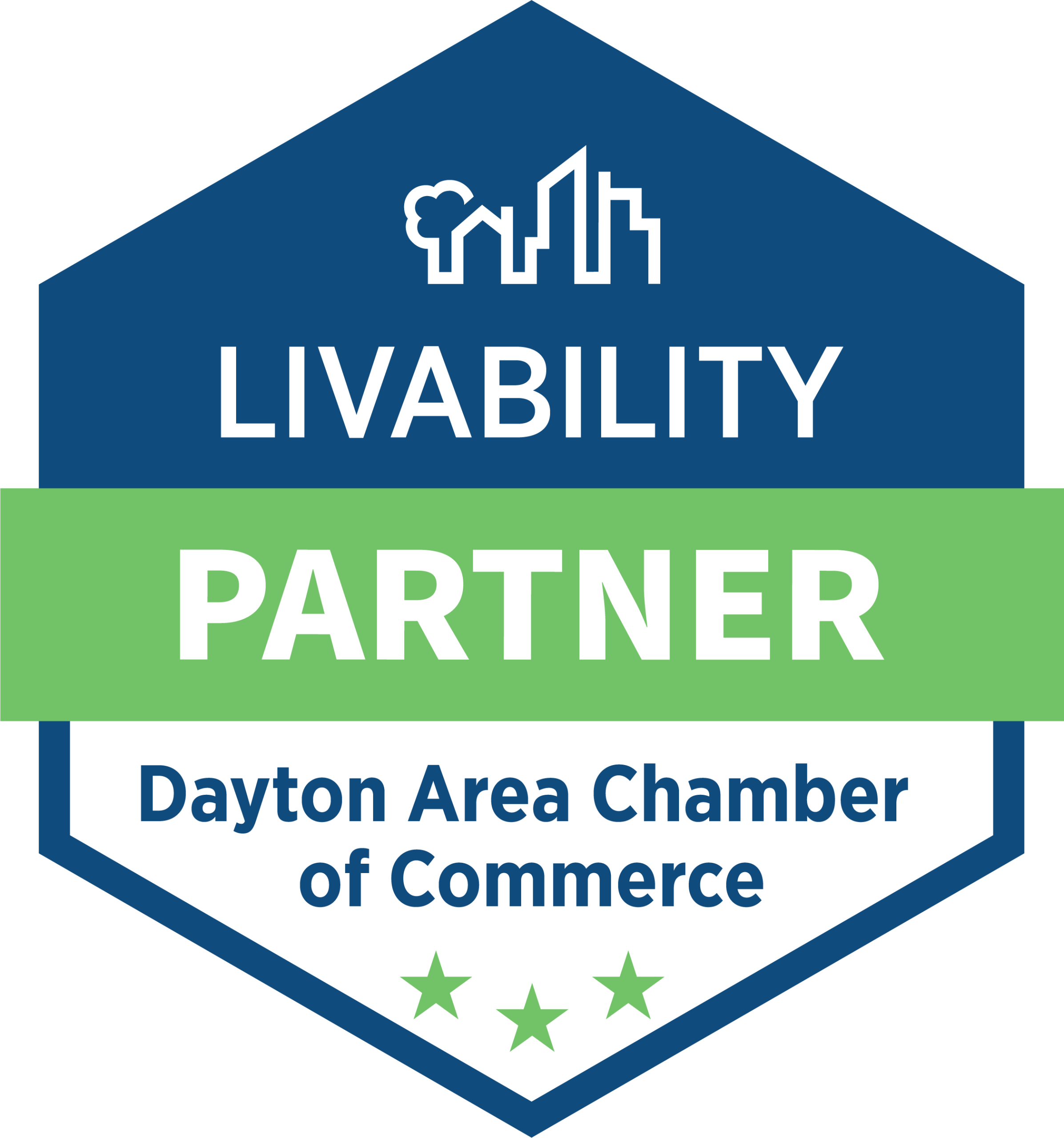Workplace safety during COVID-19: Now & Next
Article submitted by: Gary Auman; Auman, Mahan & Furry
While we continue to hear about the Coronavirus every day, even on weekends, it is important that we distill down the myriad of information into a usable form. I would like to take this opportunity to discuss COVID-19 situation as it is currently and as to how it will affect employers as we work to get the economy restarted from a safety/OSHA compliance standpoint. So, I am going to look into my “crystal ball” for part to the article and try to be as accurate as I can be with
regards to the future. As an employer you have two goals in the current situation. First to provide your employees a safe place to work – to eliminate or minimize as much as possible their potential exposure to COVID-19. Second, you need comply with OSHA guidance and recommendations (we do not have any OSHA requirements at this time), which are also geared towards protecting your employees, but perhaps not as completely as you would desire.
But, before we get into safety and health and the Coronavirus, I want to remind everyone that you cannot focus so much on the Coronavirus that you relax your training and enforcement of all of the safety and health standards that affect the health and safety of your employees on an every day basis. OSHA continues to function regarding ALL safety and health issues in the workplace. So, while the Coronavirus/COVID-19 has taken over the lion’s share of attention when it comes to safety and health, DO NOT disregard ANY other aspects of your company’s safety and health program to focus ALL of your attention on the current emergency. You still need to train your employees – perform your safety orientation, do your toolbox talks and daily safety training and audits and enforce ALL of your safety rules. Having said that the remainder of this article will consider what needs to be accomplished by you to address the Coronavirus/COVID-19.
COVID-19 Now
When this virus first appeared, OSHA announced it would ensure the protection of employees by applying the General Duty Clause or Section 5(a)(1) of the Occupational Safety and Health Act of 1970 (the “Act”) as its enforcement/compliance tool. That means OSHA has concluded that COVID-19 is a recognized hazard that is causing or likely to cause death or serious physical harm to employees. As I have said before, this decision by OSHA is one of the few by the agency, in my opinion, that accurately applies the General Duty Clause as intended when it was promulgated as part of the Act. While I feel that this is an appropriate application (unless you have a great idea of how to prove COVID-19 is not a recognized hazard in light of all the media and governmental regulation) it does create an obligation for all employers. In my opinion that obligation will not change in the foreseeable future.
Those who know me know that my FIRST goal is the protection of employees, not in trying to find ways to avoid safety. To that end, and to keep this article from becoming a novel, I will address my comments primarily to field work (but much of my comments will apply readily to manufacturers and other). You MUST now have in place a COVID-19 pandemic response policy and plan. It must include the steps you are taking to protect your employees from COVID-19 as well as your protocol for training your employees and for enforcing the work rules you have in place. This program needs to be a permanent part of your safety program even when we have COVID-19 under control. As I will discuss later in this article, your plan will need to become a “living” program. It should be in the same style as your Emergency Action Plan (EAP). By this I mean you need a company pandemic response plan, that exists next to your EAP, which should require a site-specific plan for each location at which you have employees working. This is necessary because, not only do we have federal OSHA/CDC guidelines and recommendations, we also have state and local “orders, regulations, guidelines and recommendations.” You, your safety team and perhaps your company doctor, need to review those that apply to you in any location at which you are going to work. DO NOT forget; no matter where your company is headquartered, you are required to comply with all government requirements, etc. in the state and location at which your employees will be working to satisfy the requirements of the OSHA General Duty Clause.
At a minimum you should include the following in your company plan/policy:
- Employees SHALL use social distancing at a minimum of six feet
- Employees SHALL confirm their temperature each day when they arrive to work
- Employees with unacceptable temperature or other symptoms shall remain or be sent home to self-quarantine for ________ days
- Employees should frequently wash their hands with soap and water
- Employees SHALL never cough or sneeze without covering their mouth AND nose. If masks are not available employees shall cough or sneeze into their elbow.
- Employees should avoid touching their face
- Employees SHALL NOT share tools or electronic communication devices
- Employees SHALL disinfect equipment before using it, when possible
- Non-essential business travel SHALL be eliminated (my word) or minimized and procedures shall be established for employees returning from travel before returning to work.
- Develop procedures for workforce contact tracing
- Develop special accommodations for vulnerable employees.
- All specific OSHA standards governing the use of PPE, including, but not limited to personal respiratory equipment, face shields, hand protection, etc. shall be complied with.
These requirements shall be enforced under the __________ Company Safety Enforcement Program
A site-specific pandemic policy shall be developed for each worksite. The eleven points listed in the __________ Company Pandemic Policy shall be addressed in the site-specific plan along with any State or Local laws, regulations, recommendations or guidance.
Beyond the above, you need to familiarize yourself with any state or local regulations that apply to businesses in your state or locality and stay current with regards to them. For example, Nevada enacted a requirement several weeks ago prohibiting more than one employee from traveling in a crew cab truck or working from a scissors or aerial lift truck. I know many employers have employees share hotel rooms when they travel for the company. This, again, should be prohibited, whether or not there is a law or regulation addressing room sharing. In some states a state OSHA plan is in place and in others still under Federal OSHA control, failure to comply with a state specific regulation could result in an employee complaint to OSHA, which could (will) require you to justify your actions to OSHA and/or face a compliance inspection.
 COVID-19 NEXT
COVID-19 NEXT
So, what is next? Here is where some crystal ball gazing is necessary. The difficult thing to predict is how each state and, perhaps even each local community will reopen for full business operations. Will all states fully reopen for business as usual? Many of us do not think we will go back to “the way it was” at any time in 2020 and perhaps longer than that. Social distancing is one of those restrictions that may well be with us for a long time. The same goes for other aspects of the current regulations, guidelines and recommendations. When does a guideline or recommendation become more than that? This may be at the heart of the matter. In light of that, I feel we must again look at the situation from two perspectives – the safety of your employees and/or the avoidance of problems with state and federal regulatory agencies. While these may be the same or very closely similar, they may necessitate different approaches.
To fulfill the goal of providing a safe work environment for your employees, you need to look beyond ways to “avoid” providing safeguards and determine if what you will continue to do will fully protect your workforce, even if you can or could find a way around doing it. Also (and I may say this again), you will need to put the health and safety of your employees before their importance to you because of their skill sets and objectively and consistently apply and enforce your safety rules.
To accomplish the tasks necessary to achieve, the goals in the preceding paragraph you will need to closely follow all developments regarding protecting all workers form COVID-19. I cannot predict when you might be relieved of this obligation, but I think you will be safe to assume it will extend, at least, until the end of 2020. Let us first look at the list from the NOW to see which may be with us after states have reopened. I believe the following Federal recommendations and guidelines will be with us after reopening and perhaps until the end of 2020:
- MAINTAIN some form of social distancing and/or wear masks.
- Symptomatic employees stay home and self-quarantine for 14 days.
- DO NOT share tools or electronic devices.
- FREQUENTLY wash hands with soap and water.
- Disinfect work surfaces and tools whenever possible.
- Take steps to protect vulnerable employees.
- NEVER cough or sneeze without covering your face with a tissue or mask or cough and sneeze into a tissue and dispose of it.
The above are the obvious safeguards that I believe will remain for a while after the states have reopened. I believe these are the minimum basic safety considerations. Of course, as I discussed above, you will also need to remain up to date with your state and local regulations and guidelines and keep them as part of your site-specific COVID-19 Pandemic Protection Program.
From an OSHA General Duty Clause enforcement perspective, it is a new day. Consider the other, not specifically regulated, areas that are currently enforced under the General Duty Clause – Heat and Cold Illness protection, Distracted Driving and Workplace Violence and OSHA and/or NIOSH has provided us with a short list of expectations for employers to protect their employees. Also, they have been with us for several years and that fact, I believe, formed the basis for the OSHRC decision in the Sturgill Roofing case. But I believe we have only seen a hand full of employee complaints relating to employers allegedly not protecting employees in these areas. This is probably because the OSHA and NIOSH guidelines (to the extent they exist in writing) have not been widely published to the general public. BUT that is NOT the case with COVID-10. While I have not done a scientific study, I feel that it is pretty apparent that at least seventy-five percent of the media frenzy that has overtaken the news has been devoted to COVID-19. AND, much of what the general public (and I mean EVERYONE) is witnessing in the media is if not conflicting; it is putting different “spins” on what we read and see.
So, everyone who works for you has the ability to determine what they think you should be doing to protect them from COVID-19. And, if they do not think you have been doing what they have decided you should be doing they are aware that they can call OSHA and file a complaint. OSHA has reported that it has received hundreds of employee complaints concerning COVID-19 pandemic compliance. When such a complaint is made, the OSHA area office will frequently react by faxing and/or emailing you what I call an informal complaint letter. This will state the employee complaint and require you to respond to the allegations within five business days. That response must be posted in the workplace and a copy will be shown to the complainant by OSHA. If he/she disagrees with your response, you may hear again from OSHA with a requirement to perform an RRI or rapid response investigation. Now you will have to complete detailed form and possibly submit a copy of your pandemic protection program (it will help if your program contains an effective date). You will usually have five working days to complete the RRI and get it to OSHA. If this proves unacceptable you may see an OSHA compliance officer to perform a compliance inspection.
Why did I go through all of this? I want to be sure yo understand that from a safety and health compliance standpoint, we are a long way from being back to where we were a year ago. In fact, I do not believe we will be back to that point anytime soon if ever. My crystal ball is becoming cloudy. But for now, and the remainder of 2020:
- Develop a pandemic protection policy for your company (not limited to COVID-19).
- Develop a subpart to that plan for COVID-19.
- Develop site specific plans for COVID-19 at each site at which you will work and consider all Federal, State and Local regulations and recommendations for each location.
- Stay up to date with all changes issued by Federal, State and Local governments that may require an amendment to your site specific or general plan.
- Train your employees in the specific rules in the plan that governs their site and retrain them anytime you make a change to your plan.
- Consistently and objectively enforce the work rules in your plan.
- Do not ignore employee concerns – take them seriously and respond to them in writing if advised to do so by counsel.
- Do not substitute your “expertise” for that of medical professionals. If you question information an employee brings to you or that you become aware of, vet it through your company medical consultant and document the results and actions you are taking as a result.
Do not forget that General Duty Clause citations are classified at a minimum as serious and OSHA will not negotiate them down to other than serious. This leaves yo with the decision of accepting a serious OSHA citation on your record that could have a significant effect on your ability to bid work or to incur the costs of attempting to defend the citation. Take safety in the face of the COVID-19 pandemic seriously and adopt those policies necessary to protect your workforce.









